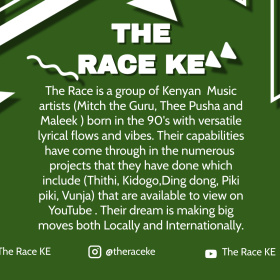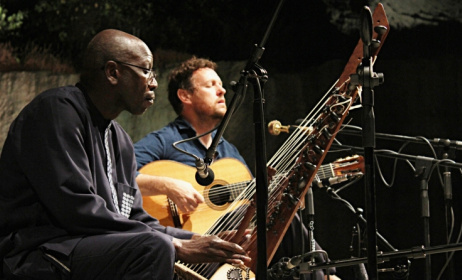The story of Ghana's favourite genre – part 4
This article continues a treatise of the hiplife genre in Ghana.
 Mzbel is one of Ghana's popular hiplife artists. Photo: Modern Ghana
Mzbel is one of Ghana's popular hiplife artists. Photo: Modern Ghana
Key issues facing the genre
There are queries as to why hiplife music does not receive as much airplay in Nigeria as Nigerian music gets in Ghana, and why the genre is not enjoying popularity beyond Ghanaian communities worldwide.
The quality of some of the songs, both in terms of content and production, leaves much to be desired. Ace producer Zapp Mallet bemoans the mediocrity that is so prevalent on the Ghanaian scene. For him, a continent that produced the likes of Fela Kuti, Hugh Masekela and Osibisa should not be churning out such chaff.
For some critics, the issues afflicting the industry are self-inflicted. These include aversion to the Musicians Union of Ghana (MUSIGA) which is viewed with suspicion by some hiplife artists who consider it a toothless bulldog. Other challenges include the lack of originality with many hiplife artists who simply copying beats and styles without striving for originality.
To a certain extent, it is believed that this problem stems from the fact that music is not taught at basic school level. So, apart from students who attend private schools where music is taught or who have received private lessons at home, artists have no knowledge of the rudiments of music to have a certain level of appreciation of good music. This might explain the amount of discordant music that is played all over the country, since many of the sound engineers also have no knowledge of music or how to play an instrument apart from manipulating software for the production of beats.
The solution, among other suggestions, lies in the reintroduction of music education at basic school level so that talented children can pick up the rudiments at an early age. The current crop of artists also have to appreciate their shortcomings and learn to improve their music appreciation by either learning musical instruments or taking short courses in musicianship.
For arts writer John Owoo, the way to global appeal for hiplife would be to use our local rhythms to draw attention. As he puts it, “There is no way a Ghanaian artist can play better hip hop than American hip hop stars, so definitely our music will not sell outside. That’s why our music is locked up within the system. It’s not going out, I mean, people are not buying it outside. Let me add that, things are changing: artists are now doing more quality stuff and by including a little bit of local content, we are illustrating our own indigenous resources.” Owoo also expresses concern about the fact that the top artists on the music scene today cannot play instruments.
For Okyeame Kwame, the way forward to scaling international heights is through collaborations with musicians from countries in which they would like to break into – like the work Nigerian artists are doing with American artists. It’s a question of identity and finding ourselves.
Hiplife artists, their management and the beatmakers have to scale up to make music that would appeal to generations like their predecessors did. Let’s push our Fuse ODGs, ELs, Sarkodies, Gurus, VVIPs, R2Bees and the rest to get us there. We can!
This is an excerpt from Ahuma Bosco Ocansey’s forthcoming book Conversations on the Creative Arts in Ghana. This is the fourth and last instalment of the serial.




























Comments
Log in or register to post comments